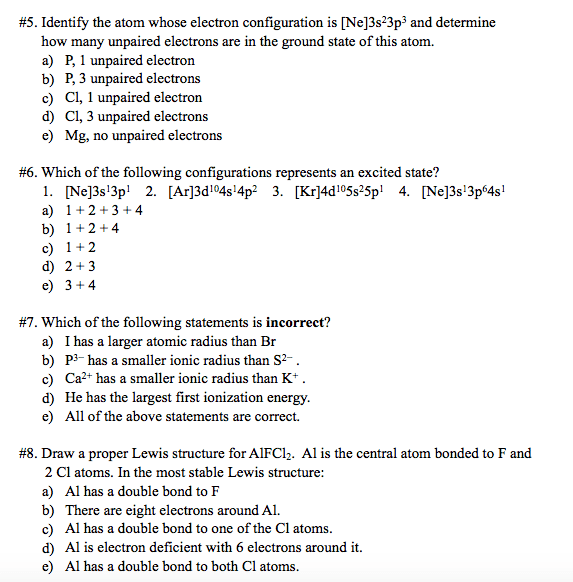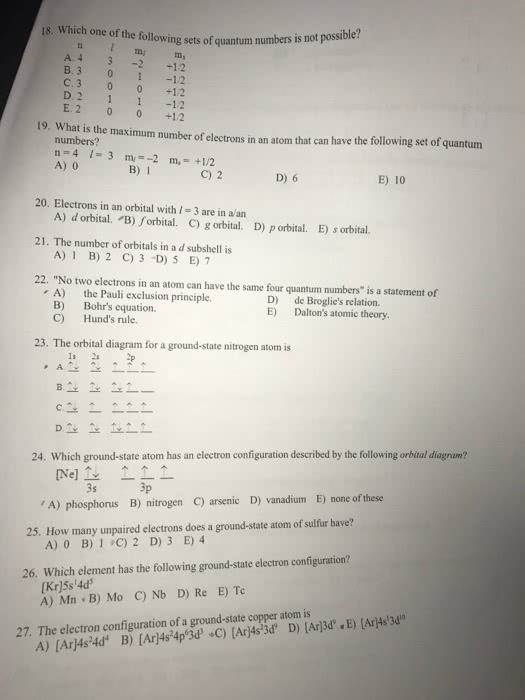CHM 2045 Lecture Notes - Lecture 10: Diamagnetism, Effective Nuclear Charge, Electron Configuration
Document Summary
To answer: find the electron configurations of all elements in the question: mg: [ne]3s^2, p: [ne] 3s^2, 3p^3, ni: [ar] 4s^2, 3d^8, ge: [ar] 4s^2, 3d^10, 4p^2, y: [kr]5s^2, 4d^1. An ion is a charged atom: cation are positively charged, anions are negatively charged. O^2- (what is the electron configuration for an ion?) [he]2s^2, 2p^4 configuration for o (only) Fluorine you add the electrons to fill orbitals. Whenever elements have the same electron configuration they are isoelectronic. Remove or add electrons to the highest energy level. To solve for the configuration of an ion, always start with the neutral element and then modify the electron configuration for the anion. Magnetism: paramagnetic attracted to an electric field (must have unpaired electrons, diamagnetic not attracted to an electric field (no unpaired electrons) Z(subscript eff): effective nuclear charge: describes the actual charge than an electron feels describes the attraction to the nucleus. Hydrogen (what is the actual charge that this element feels?)



